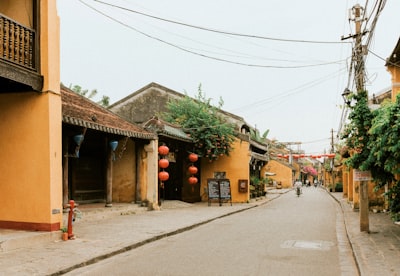
The Ancient Town of Hoi An is a UNESCO World Heritage Site and one of the top attractions in the city. Wander through the charming streets lined with historic buildings, traditional houses, and colorful lanterns. Visit the iconic Japanese Covered Bridge, the Phuc Kien Assembly Hall, and the Tan Ky House to learn about the town's rich history and culture. The Hoi An Central Market is a bustling hub where you can find an array of local produce, handicrafts, and street food. Explore the vibrant stalls and try delicious Vietnamese dishes like banh mi, cao lau, and com ga. The Marble Mountains are a group of five limestone hills with caves, pagodas, and stunning viewpoints. Climb to the top for panoramic vistas of the surrounding landscape and the nearby Danang coastline. The An Bang Beach is a beautiful stretch of white sand and clear waters, perfect for swimming, sunbathing, and enjoying the coastal atmosphere. Rent a bicycle and explore the scenic coastal roads or join a boat tour to nearby islands. The Cam Kim Island is a tranquil rural area where you can experience traditional Vietnamese village life. Visit local workshops, try your hand at handicrafts, and enjoy a peaceful boat ride along the Thu Bon River.
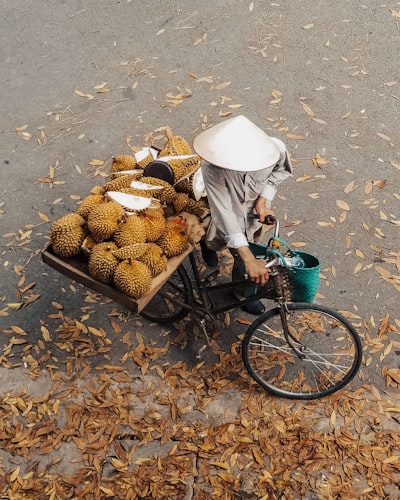
The Ho Chi Minh Mausoleum is one of the most iconic landmarks in Hanoi. This grand marble mausoleum houses the embalmed body of Ho Chi Minh, the revered founding father of modern Vietnam. Visitors can view Ho Chi Minh's preserved body and learn about his life and legacy through the museum exhibits. The surrounding gardens and monuments add to the solemn and historic atmosphere. The Temple of Literature is a well-preserved Confucian temple that dates back to 1070. It was Vietnam's first national university and is considered the country's first center of learning. Visitors can explore the five courtyards, admire the traditional Vietnamese architecture, and learn about the history of education in Vietnam. Hoan Kiem Lake and the Ngoc Son Temple are located in the heart of Hanoi's Old Quarter. The serene lake is home to a small island with the iconic Ngoc Son Temple, which is connected to the shore by the bright red The Huc Bridge. This picturesque setting is a popular spot for locals and tourists to stroll, relax, and take in the tranquil atmosphere. The Old Quarter is Hanoi's historic commercial district, with a maze of narrow streets, traditional shop houses, and bustling markets. Wandering through the Old Quarter offers a glimpse into the city's past, with its French colonial architecture, local handicrafts, street food stalls, and vibrant energy. Highlights include Hang Be Market, Hang Gai Street (famous for its silk products), and Bia Hoi Corner, where locals gather to drink fresh draft beer. The Imperial Citadel of Thang Long is a UNESCO World Heritage Site that was the political center of imperial Vietnam for nearly 13 centuries. Visitors can explore the ancient ruins, gates, and monuments, as well as the Vietnam Military History Museum, which showcases the country's long history of warfare. Tran Quoc Pagoda is one of the oldest Buddhist temples in Hanoi, dating back to the 6th century. Located on a small island in West Lake, the pagoda features a serene setting and beautiful architecture, including a 15-meter-tall tower. It's a peaceful place to learn about Vietnamese Buddhist culture and traditions. The One Pillar Pagoda is a historic Buddhist temple built in 1049. The unique, single-pillar design is said to resemble a lotus blossom rising from a pond. The pagoda is located in the gardens of the Presidential Palace and is considered one of Vietnam's most iconic architectural landmarks. Bat Trang Ceramic Village is a traditional pottery-making village located just outside of Hanoi. Visitors can watch skilled artisans demonstrate the centuries-old techniques of ceramic production, browse the colorful shops, and purchase unique handmade souvenirs. The Vietnam Museum of Ethnology provides a comprehensive overview of Vietnam's diverse ethnic minority groups and their cultural traditions. Exhibits include traditional houses, artifacts, and multimedia displays that offer insights into the country's rich cultural heritage. Hanoi's Old Quarter is also home to numerous historic temples and pagodas, including St. Joseph's Cathedral, Quan Thanh Temple, and Tay Ho Pagoda. These religious sites offer visitors the opportunity to learn about Vietnam's Buddhist, Taoist, and Catholic influences. In addition to the city's cultural attractions, Hanoi is also known for its vibrant food scene. Visitors should explore the bustling street food stalls, sample local specialties like pho, bun cha, and banh mi, and immerse themselves in the lively atmosphere of the city's many markets and eateries. Overall, Hanoi offers a rich tapestry of history, culture, and tradition that makes it a must-visit destination for travelers to Vietnam. From the grand monuments and historic sites to the lively markets and delicious cuisine, there is something to captivate visitors of all interests.
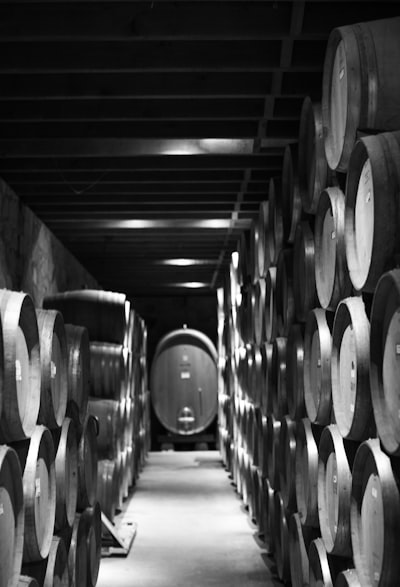
Napa Valley is renowned for its world-class wineries, stunning natural beauty, and rich culinary heritage. As a traveler, here are the top must-see attractions in this renowned destination: 1. Castello di Amorosa: This 121,000-square-foot, 121-room medieval-style castle is a unique and impressive winery that offers tours, tastings, and a glimpse into Napa's history. 2. Calistoga Spa Hot Springs: Indulge in the natural geothermal mineral waters and mud baths that have made Calistoga a renowned wellness destination for over a century. 3. Napa Valley Wine Train: Experience the region's vineyards and historic towns aboard a restored 1950s Pullman train, complete with gourmet dining and wine tasting. 4. Yountville: Explore this charming town, known for its Michelin-starred restaurants, art galleries, and boutique shops, all set against the backdrop of the Napa Valley. 5. Domaine Carneros: Visit this stunning château-style winery, renowned for its sparkling wines and panoramic views of the Napa Valley. 6. Oxbow Public Market: Indulge in the local culinary scene at this vibrant indoor-outdoor marketplace, featuring artisanal food vendors, craft breweries, and specialty shops. 7. Sterling Vineyards: Ride the aerial tram to the top of this winery, where you can enjoy breathtaking 360-degree views of the valley and explore the production facilities. 8. Napa Valley Olive Oil Manufacturing Company: Discover the art of olive oil production and sample a variety of high-quality, locally-produced oils and vinegars. 9. Castello di Amorosa: Explore the grandeur of this 121-room medieval-style castle, complete with a torture chamber, chapel, and wine tasting rooms. 10. Napa Valley Vine Trail: Enjoy a scenic hike or bike ride along this 47-mile trail, which connects the towns and wineries of the Napa Valley.

The French Quarter The French Quarter is the heart of New Orleans and a must-visit destination. Stroll down the lively Bourbon Street, known for its vibrant nightlife, live music, and Cajun and Creole cuisine. Admire the historic architecture, including the iconic St. Louis Cathedral and the charming Jackson Square. Explore the French Market, a bustling open-air marketplace, and indulge in beignets, the city's famous fried pastries, at Café Du Monde. National WWII Museum The National WWII Museum is a world-class institution that offers a comprehensive and immersive experience of the war. Explore interactive exhibits, personal accounts, and artifacts that bring the history of World War II to life. Visitors can take a guided tour, attend live performances, and even dine at the on-site restaurant to fully immerse themselves in the museum's educational and emotional journey. Swamp Tours Venture into the lush, mysterious Louisiana swamps on a guided boat tour. Witness the unique ecosystem teeming with wildlife, including alligators, turtles, and a variety of birds. Learn about the local Cajun culture and the importance of the swamps to the region's history and way of life. These tours offer a chance to escape the city and experience the natural beauty of the Louisiana wetlands. Garden District Stroll through the charming Garden District, known for its well-preserved antebellum mansions, lush gardens, and tree-lined streets. Admire the stunning architecture, including the iconic Lafayette Cemetery No. 1, and learn about the history and stories behind these grand homes. Stop by Magazine Street, a popular shopping and dining destination, to explore the local boutiques, art galleries, and cafes. Steamboat Natchez Experience the Mississippi River in style by taking a cruise on the historic Steamboat Natchez. Enjoy the scenic views of the city's skyline and the mighty river while indulging in a Creole-inspired lunch or dinner. The boat's live jazz music and narrated tour provide a unique and memorable way to explore New Orleans from the water. Mardi Gras World Get a behind-the-scenes look at the iconic Mardi Gras celebration by visiting Mardi Gras World. Tour the massive warehouse where the elaborate floats and costumes are designed and constructed. Learn about the history and traditions of this vibrant festival, and even dress up in authentic Mardi Gras attire for a truly immersive experience. New Orleans Museum of Art The New Orleans Museum of Art is home to an impressive collection of art, including the renowned Sydney and Walda Besthoff Sculpture Garden. Explore the museum's diverse exhibits, which showcase a range of styles and mediums, from traditional Southern art to contemporary works. The museum also hosts special exhibitions and events throughout the year, making it a must-visit for art enthusiasts.
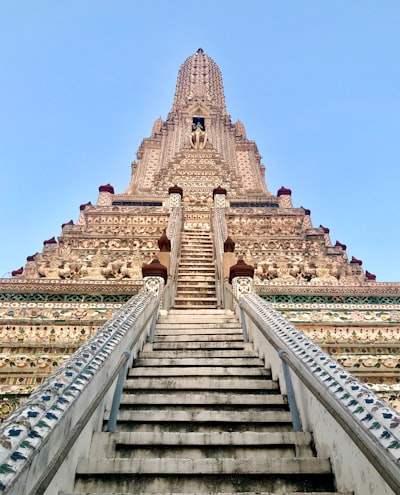
Grand Palace and Wat Phra Kaew The Grand Palace is a magnificent complex that served as the official residence of the Thai royal family for over 150 years. Within the palace grounds, you'll find Wat Phra Kaew, the Temple of the Emerald Buddha, which houses the revered Emerald Buddha statue, one of the most sacred religious objects in Thailand. Wat Arun (Temple of Dawn) Wat Arun, also known as the Temple of Dawn, is a stunning riverside temple with a distinctive spire-like structure adorned with colorful porcelain tiles. The temple is particularly beautiful at sunrise and sunset, when the sun's rays reflect off the intricate details. Floating Markets Experience the vibrant and unique floating markets of Bangkok, where vendors sell a variety of fresh produce, street food, and handicrafts from their boats. The most famous floating markets are Damnoen Saduak and Amphawa, both offering a glimpse into the traditional way of life in Thailand. Wat Pho (Temple of the Reclining Buddha) Wat Pho is home to the iconic Reclining Buddha, a massive 46-meter-long statue depicting the Buddha in a state of nirvana. The temple complex also features beautiful murals, intricate architecture, and a renowned school of traditional Thai massage. Chatuchak Weekend Market Chatuchak Weekend Market is one of the largest markets in the world, offering an incredible array of goods, from clothing and handicrafts to antiques and pets. Spend a day exploring the endless stalls and immersing yourself in the lively atmosphere. Chao Phraya River Cruise Take a leisurely cruise along the Chao Phraya River, also known as the "River of Kings," to admire the city's skyline and witness the bustling river life. Many river cruise options are available, ranging from traditional longtail boats to luxury dinner cruises. Siam Paragon and Siam Center For a modern shopping experience, visit the upscale Siam Paragon and Siam Center malls, which offer high-end fashion, electronics, and a wide variety of dining options, including international cuisine and local Thai delicacies. Khao San Road Khao San Road is a famous backpacker hub, known for its lively atmosphere, street food stalls, and budget-friendly accommodations. Explore the vibrant street life, browse the shops, and immerse yourself in the youthful energy of this iconic Bangkok destination. Jim Thompson House Discover the legacy of Jim Thompson, an American businessman who played a crucial role in reviving the Thai silk industry. The Jim Thompson House is a beautifully preserved traditional Thai-style home that showcases the designer's impressive art collection. Lumphini Park Escape the bustling city and enjoy a peaceful stroll or jog through Lumphini Park, a lush green oasis in the heart of Bangkok. The park is home to a variety of flora and fauna, including monitor lizards and other wildlife. These are just a few of the must-see attractions in Bangkok, a city that offers a captivating blend of ancient traditions and modern wonders. Whether you're interested in history, culture, shopping, or simply soaking up the vibrant atmosphere, Bangkok has something to enchant every traveler.

Wat Phan Tao Wat Phan Tao is a beautiful Buddhist temple located in the heart of Chiang Mai's old city. The temple features intricate wood carvings, golden Buddhas, and a serene atmosphere. Visitors can explore the temple grounds, observe monks in prayer, and learn about the history and significance of this important religious site. Doi Suthep Doi Suthep is a mountain located just outside of Chiang Mai that is home to the famous Wat Phra That Doi Suthep temple. Visitors can take a scenic drive or hike up the mountain to reach the temple, which offers stunning views of the city below. The temple complex features ornate architecture, golden pagodas, and a sacred relic of the Buddha. Chiang Mai Night Bazaar The Chiang Mai Night Bazaar is a bustling night market that offers a wide variety of local handicrafts, clothing, and street food. Visitors can browse the stalls, bargain with vendors, and immerse themselves in the lively atmosphere of this popular tourist destination. Elephant Nature Park The Elephant Nature Park is a sanctuary that provides a safe haven for rescued elephants. Visitors can observe the elephants in their natural habitat, learn about their care and conservation, and even participate in activities like feeding and bathing the elephants. Wat Chedi Luang Wat Chedi Luang is a historic Buddhist temple located in the heart of Chiang Mai's old city. The temple features a massive stone chedi (stupa) that was once one of the tallest structures in the city. Visitors can explore the temple grounds, admire the intricate carvings and architecture, and learn about the temple's rich history. Doi Inthanon National Park Doi Inthanon National Park is a stunning natural area located just outside of Chiang Mai. Visitors can hike to the summit of Doi Inthanon, the highest mountain in Thailand, and explore the park's diverse ecosystems, including waterfalls, forests, and meadows. Wat Umong Wat Umong is a unique Buddhist temple located just outside of Chiang Mai's old city. The temple features a series of underground tunnels and meditation chambers, as well as a peaceful forest setting. Visitors can explore the temple grounds, observe monks in meditation, and learn about the history and significance of this unique religious site. Baan Tawai Village Baan Tawai Village is a hub for traditional handicrafts and artisanal products in Chiang Mai. Visitors can browse the shops and workshops, watch artisans at work, and purchase unique souvenirs and gifts to take home.
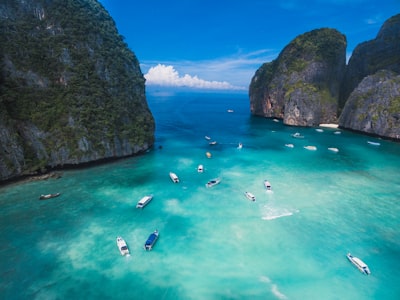
Patong Beach: Patong Beach is the most famous and lively beach in Phuket. It is known for its vibrant nightlife, bustling markets, and a wide range of water sports and activities. Visitors can enjoy swimming, sunbathing, and exploring the numerous restaurants, bars, and shops along the beachfront. Phi Phi Islands: The Phi Phi Islands are a group of stunning islands located just a short boat ride from Phuket. These islands are renowned for their crystal-clear waters, white sandy beaches, and dramatic limestone cliffs. Visitors can snorkel or dive to explore the vibrant marine life, hike to scenic viewpoints, and relax on the beautiful beaches. Promthep Cape: Promthep Cape is a scenic viewpoint located at the southern tip of Phuket. It offers breathtaking panoramic views of the Andaman Sea and the surrounding islands. Visitors can watch the stunning sunsets from this vantage point and explore the nearby lighthouse and walking trails. Wat Chalong: Wat Chalong is the largest and most important Buddhist temple in Phuket. It is known for its intricate architecture, beautiful murals, and the presence of a relic of the Buddha. Visitors can explore the temple grounds, learn about the local Buddhist culture, and participate in various religious ceremonies. Old Phuket Town: Old Phuket Town is a charming historic district that showcases the island's rich cultural heritage. The area is characterized by well-preserved Sino-Portuguese architecture, colorful shophouses, and a lively street market. Visitors can stroll through the narrow streets, visit local art galleries and museums, and indulge in the delicious local cuisine. Gibbon Rehabilitation Project: The Gibbon Rehabilitation Project is a conservation center that rescues and rehabilitates gibbons, a species of small apes. Visitors can observe the gibbons in their natural habitat, learn about the conservation efforts, and participate in educational activities. Phuket Aquarium: The Phuket Aquarium is a modern and interactive aquarium that showcases the diverse marine life of the Andaman Sea. Visitors can explore the various exhibits, observe the feeding of the sharks and rays, and learn about the importance of marine conservation. Karon Viewpoint: Karon Viewpoint is a scenic lookout point that offers stunning views of the three beautiful beaches of Karon, Kata, and Kata Noi. Visitors can enjoy the panoramic vistas and take in the natural beauty of the island. Phuket FantaSea: Phuket FantaSea is a unique cultural theme park that combines traditional Thai culture with modern entertainment. Visitors can enjoy a spectacular show featuring elaborate costumes, acrobatics, and traditional Thai performances, as well as explore the various shops and restaurants within the park. Phuket Big Buddha: The Phuket Big Buddha is a massive white marble statue that sits atop the Nakkerd Hills, offering breathtaking views of the island. Visitors can climb to the top of the statue, explore the surrounding temple complex, and learn about the significance of this important Buddhist landmark.
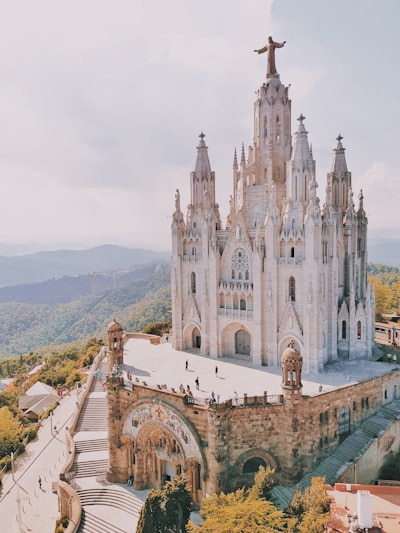
La Sagrada Familia The iconic and unfinished basilica designed by the renowned architect Antoni Gaudí is a must-visit in Barcelona. This architectural masterpiece features intricate facades, stunning stained glass windows, and towering spires that offer breathtaking views of the city. Visitors can explore the interior and exterior of this UNESCO World Heritage site and learn about its fascinating history and ongoing construction. Park Güell Another iconic Gaudí creation, Park Güell is a whimsical public park that showcases the architect's unique style. Visitors can stroll through the colorful mosaic-covered terraces, admire the iconic dragon fountain, and enjoy panoramic views of Barcelona from the park's highest point. The park's architectural elements, such as the serpentine bench and the Hypostyle Room, are true masterpieces. Las Ramblas This lively tree-lined pedestrian boulevard is the heart of Barcelona. Stretching from Plaça de Catalunya to the Christopher Columbus monument, Las Ramblas is a hub of activity, with street performers, outdoor cafes, and a vibrant atmosphere. Visitors can explore the nearby Boqueria Market, one of the largest and most famous food markets in Europe, and immerse themselves in the local culture. Barri Gòtic (Gothic Quarter) The Barri Gòtic, or Gothic Quarter, is the historic center of Barcelona, featuring winding medieval streets, ancient Roman ruins, and stunning Gothic architecture. Highlights include the Barcelona Cathedral, the Plaça del Rei, and the Palau Reial Major, the former residence of the Counts of Barcelona. Montjuïc Montjuïc is a hill overlooking the city that offers stunning views and a wealth of cultural attractions. Visitors can explore the Montjuïc Castle, the Miró Foundation, and the Museu Nacional d'Art de Catalunya, which houses an impressive collection of Catalan art. The hill also hosts the Montjuïc Fountains, a spectacular light and water show. Passeig de Gràcia This elegant boulevard is home to some of Barcelona's most famous Modernist buildings, including Gaudí's Casa Batlló and Casa Milà (La Pedrera). Visitors can admire the unique architecture, browse high-end shops, and enjoy the lively atmosphere of this upscale neighborhood. Barceloneta Beach No trip to Barcelona is complete without a visit to the city's iconic beach. Barceloneta offers a lively seaside atmosphere, with beachfront bars, seafood restaurants, and opportunities for swimming, sunbathing, and water sports.
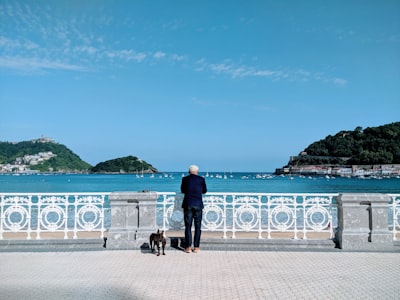
La Concha Beach: This crescent-shaped bay is the crown jewel of San Sebastian, boasting soft, golden sand and crystal-clear waters. Stroll along the promenade, take a dip in the ocean, or simply relax and soak up the sun. Mount Igueldo: Offering panoramic views of the city and the surrounding coastline, Mount Igueldo can be accessed by a historic funicular railway. At the top, you'll find an amusement park, a lighthouse, and several viewpoints that provide stunning vistas. Parte Vieja (Old Town): Wander through the charming narrow streets of the Old Town, where you'll find a vibrant mix of pintxo (Basque-style tapas) bars, local shops, and historic buildings. Don't miss the Plaza de la Constitución, a picturesque square surrounded by colorful buildings. Catedral del Buen Pastor: This impressive neo-Gothic cathedral, completed in the late 19th century, is a must-visit for its stunning architecture and intricate details. Admire the towering spires and the ornate interior. Palacio de Miramar: This elegant palace, built in the late 19th century, serves as the summer residence of the Spanish royal family. Stroll through the beautifully landscaped gardens and enjoy the stunning views of the bay. Playa de Ondarreta: Located just west of La Concha Beach, Playa de Ondarreta is a quieter and more secluded stretch of sand, perfect for those seeking a more peaceful beach experience. Monte Urgull: Hike up the slopes of Monte Urgull, a hill that offers panoramic views of the city and the harbor. Along the way, you'll discover the ruins of an old castle, as well as the iconic statue of Christ overlooking the bay. Kursaal Congress Centre and Auditorium: Designed by the renowned architect Rafael Moneo, this modern building is home to a concert hall, conference facilities, and a striking glass-and-steel structure that has become an iconic landmark of San Sebastian. Museo de San Telmo: Housed in a 16th-century Dominican convent, this museum showcases the rich history and cultural heritage of the Basque Country, with exhibits ranging from archaeological finds to traditional crafts and artworks. Peine del Viento: This striking sculpture by Eduardo Chillida, located at the end of the Ondarreta promenade, is a must-see for art enthusiasts. The massive steel sculptures are designed to interact with the powerful waves and winds of the Bay of Biscay. Playa de la Zurriola: Known for its excellent surfing conditions, Playa de la Zurriola is a popular spot for both locals and visitors. Whether you're a seasoned surfer or just want to watch the action, this beach is a great place to spend an afternoon. Mercado de la Bretxa: Immerse yourself in the vibrant local food culture by visiting this bustling indoor market, where you can find a wide variety of fresh produce, seafood, and local delicacies. Basque Cider Houses: Venture out of the city center to explore the traditional cider houses (sidrerías) of the Basque Country, where you can sample the region's renowned cider and enjoy a authentic Basque dining experience. Paseo de la Concha: Take a leisurely stroll along the promenade that runs along La Concha Beach, taking in the stunning views and soaking up the lively atmosphere. With its stunning natural beauty, rich cultural heritage, and world-renowned cuisine, San Sebastian is a truly captivating destination that offers something for every traveler. Whether you're seeking relaxation, adventure, or a deeper understanding of Basque culture, this vibrant city is sure to leave a lasting impression.
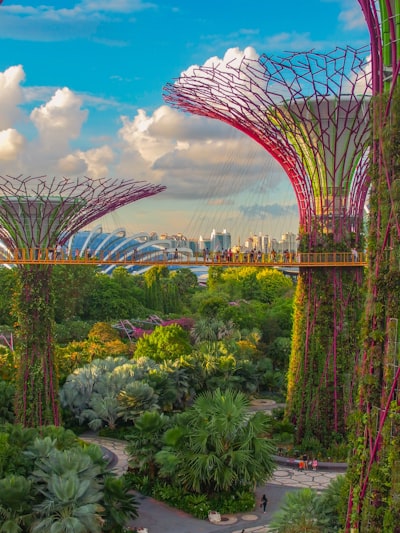
Marina Bay Sands The iconic Marina Bay Sands is a must-visit attraction in Singapore. This stunning integrated resort features a hotel, shopping mall, convention center, and the famous Sands SkyPark Observation Deck, which offers breathtaking views of the city skyline. Gardens by the Bay Explore the futuristic Gardens by the Bay, a stunning nature park featuring towering Supertree structures, the Cloud Forest and Flower Dome conservatories, and beautiful gardens showcasing diverse plant life. Singapore Flyer Take a ride on the Singapore Flyer, one of the world's largest observation wheels, for panoramic views of the city skyline and beyond. Sentosa Island Spend a day on Sentosa Island, a resort island accessible by cable car, pedestrian boardwalk, or monorail. Enjoy the beaches, theme parks, museums, and attractions like the iconic Merlion statue. Singapore Zoo Visit the award-winning Singapore Zoo, known for its open-concept exhibits and opportunities to interact with the animals, including the popular Singapore Zoo Night Safari. Chinatown Immerse yourself in the vibrant culture and history of Chinatown, with its colorful shophouses, temples, and bustling markets selling traditional Chinese goods and delicious street food. Marina Bay Explore the Marina Bay area, home to the iconic Esplanade Theatres, the ArtScience Museum, and the stunning Marina Bay Sands. Take a stroll along the waterfront promenade and enjoy the city's skyline. Singapore Flyer Ride the Singapore Flyer, one of the world's largest observation wheels, for panoramic views of the city skyline and beyond.
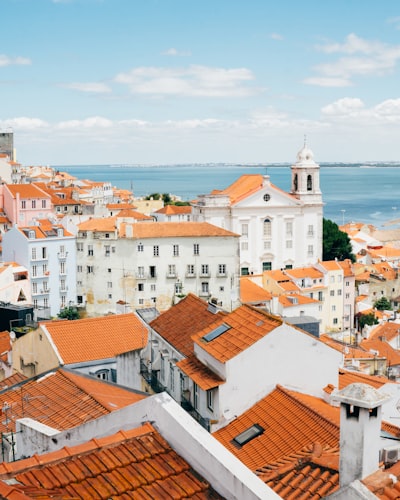
Praça do Comércio: This grand 18th-century square is one of Lisbon's most iconic landmarks, featuring impressive neoclassical architecture and stunning views of the Tagus River. Jerónimos Monastery: A UNESCO World Heritage Site, this magnificent 16th-century monastery is a masterpiece of Manueline architecture and home to the tomb of the renowned explorer Vasco da Gama. Castelo de São Jorge: Perched atop one of Lisbon's seven hills, this historic castle offers panoramic vistas of the city and the Tagus River estuary. Elevador de Santa Justa: This unique wrought-iron elevator, designed by a student of Gustave Eiffel, provides access to stunning views of the city from the Carmo Convent ruins. Bairro Alto: Lisbon's vibrant bohemian neighborhood, known for its lively nightlife, traditional Portuguese restaurants, and charming narrow streets. Oceanário de Lisboa: One of the world's largest indoor aquariums, featuring a vast array of marine life and interactive exhibits that showcase the diversity of the world's oceans. Mosteiro dos Jerónimos: Another UNESCO World Heritage Site, this 16th-century monastery is a stunning example of Manueline architecture and a must-visit for its intricate stone carvings and beautiful cloisters.
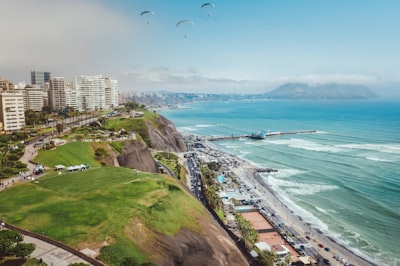
Plaza de Armas The Plaza de Armas is the historic center of Lima and a must-visit attraction. This grand plaza is surrounded by impressive colonial architecture, including the Government Palace, the Archbishop's Palace, and the Cathedral of Lima. Visitors can explore the plaza, admire the beautiful fountains and monuments, and soak up the lively atmosphere. Larco Museum The Larco Museum is one of the most renowned museums in Lima, housing an impressive collection of pre-Columbian art and artifacts. Visitors can explore the museum's galleries, which showcase ancient pottery, textiles, metalwork, and more, providing a fascinating insight into Peru's rich cultural heritage. Barranco Barranco is a charming, bohemian neighborhood in Lima, known for its colorful buildings, art galleries, and vibrant nightlife. Visitors can stroll along the picturesque streets, admire the street art, and visit the iconic Puente de los Suspiros (Bridge of Sighs), which offers stunning views of the Pacific Ocean. Miraflores Miraflores is a upscale, coastal neighborhood in Lima, known for its beautiful parks, shopping, and dining options. Visitors can explore the Parque del Amor, a scenic park overlooking the ocean, or visit the Larcomar shopping center, which offers stunning views and a variety of shops and restaurants. Huaca Pucllana Huaca Pucllana is an impressive pre-Columbian archaeological site located in the heart of Lima. This ancient ceremonial and administrative center, dating back to the 5th century AD, offers visitors a glimpse into the city's rich history and the impressive engineering feats of the ancient Peruvian civilizations. Convento de San Francisco The Convento de San Francisco is a stunning 17th-century Baroque-style church and convent, known for its intricate architecture and impressive catacombs. Visitors can explore the church's beautiful interior, admire the ornate altars and artwork, and descend into the eerie catacombs, which contain the remains of thousands of Lima's former residents. Parque de las Leyendas Parque de las Leyendas is a large, family-friendly park that features a zoo, botanical gardens, and various cultural and historical attractions. Visitors can see a wide variety of Peruvian wildlife, explore the park's archaeological sites, and learn about the country's rich cultural heritage. Mercado Central The Mercado Central is a bustling indoor market in the heart of Lima, offering a vibrant and authentic glimpse into the city's local culture. Visitors can browse the stalls, sample traditional Peruvian cuisine, and immerse themselves in the lively atmosphere. Pachacamac Pachacamac is an ancient pre-Columbian archaeological site located just outside of Lima, which was once a major religious and administrative center. Visitors can explore the site's impressive ruins, including temples, palaces, and plazas, and learn about the rich history of the Inca and pre-Inca civilizations that once thrived here. Callao Callao is a port city located just west of Lima, known for its historic sites and vibrant culture. Visitors can explore the Fortaleza del Real Felipe, a well-preserved 18th-century fortress, or visit the Museo Naval del Perú, which showcases the country's naval history.
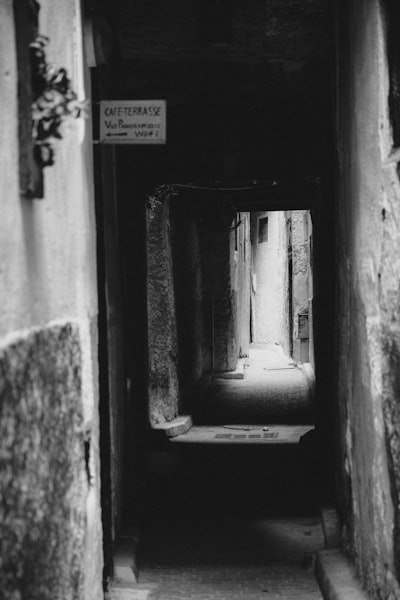
The Medina of Fez The Medina of Fez is the historic old town of Fez and a UNESCO World Heritage Site. Wandering through the winding, car-free alleyways of the Medina is a highlight for many visitors to Fez. Explore the bustling souks selling everything from spices and textiles to traditional handicrafts. Visit the Chouara Tannery, one of the oldest leather tanneries in the world, and watch the leather dyeing process. Other notable sites in the Medina include the Bou Inania Madrasa, a 14th-century Marinid university, and the Kairaouine Mosque, one of the largest mosques in Morocco. Bab Bou Jeloud Bab Bou Jeloud is the iconic blue gate that serves as the main entrance to the Medina of Fez. The gate was built in the early 20th century and features intricate Moorish architecture with its striking blue and green tiles. It's a popular spot for photos and a great starting point for exploring the Medina. Dar Batha Museum The Dar Batha Museum is housed in a former palace and showcases Moroccan arts and crafts. The museum's collection includes traditional textiles, ceramics, woodwork, and metalwork. Highlights include the beautiful Hispano-Mooresque tile work and the impressive collection of Berber carpets. Jnan Sbil Gardens The Jnan Sbil Gardens are a peaceful oasis in the heart of Fez. Also known as the Boujloud Gardens, this 19th-century garden features lush greenery, tranquil ponds, and beautiful pavilions. It's a lovely spot to escape the bustling city and enjoy some quiet contemplation. Merenid Tombs The Merenid Tombs are the ruins of a 14th-century necropolis located on a hilltop overlooking Fez. While the tombs themselves are in a state of disrepair, the site offers stunning panoramic views of the Medina and the surrounding countryside. It's a popular spot for sunset views. Nejjarine Museum of Wooden Arts and Crafts The Nejjarine Museum of Wooden Arts and Crafts is housed in a beautifully restored 18th-century fondouk (caravanserai). The museum showcases an impressive collection of traditional Moroccan woodwork, including intricate doors, furniture, and architectural elements. It's a great place to learn about and appreciate the skilled craftsmanship of Moroccan woodworkers. Al-Attarine Madrasa The Al-Attarine Madrasa is a 14th-century Marinid university that is renowned for its exquisite Moorish architecture. The madrasa's courtyard features stunning zellige (Moroccan tilework) and intricate carved cedar wood. It's considered one of the finest examples of Marinid architecture in Morocco. Moulay Idriss Mausoleum The Moulay Idriss Mausoleum is the burial site of Moulay Idriss I, the founder of the Idrisid dynasty and the city of Fez. The mausoleum is an important religious site and a place of pilgrimage for Moroccan Muslims. Non-Muslims are not allowed inside the mausoleum, but the exterior architecture is still worth admiring. Zaouia of Moulay Idriss II The Zaouia of Moulay Idriss II is the mausoleum and religious complex dedicated to Moulay Idriss II, the son of Moulay Idriss I. The zaouia features beautiful Moorish architecture with intricate tilework and carved stucco. It's an important spiritual site for Moroccans and a popular destination for visitors. Borj Nord Borj Nord is a 16th-century fortress that offers panoramic views of Fez and the surrounding countryside. The fortress houses the Museum of Moroccan Arts, which showcases a collection of traditional Moroccan weapons, costumes, and other artifacts. Visitors can also explore the fortress's ramparts and enjoy the scenic vistas. Fez Mellah The Fez Mellah is the historic Jewish quarter of Fez. Wandering through the Mellah's narrow streets and alleys provides a glimpse into the city's Jewish heritage. Highlights include the Ibn Danan Synagogue, one of the few remaining synagogues in Morocco, and the Mellah's historic cemetery.

Jemaa el-Fnaa: This iconic square is the heart of Marrakech, bustling with activity day and night. Explore the vibrant marketplace, watch street performers, and sample local cuisine from the food stalls. Koutoubia Mosque: One of the most impressive landmarks in Marrakech, the Koutoubia Mosque is a stunning example of Moorish architecture with its towering minaret visible from many parts of the city. Bahia Palace: This 19th-century palace is a masterpiece of Moroccan design, featuring intricate tilework, carved ceilings, and beautiful gardens. Saadian Tombs: Discover the opulent resting place of the Saadian dynasty, with its ornate mausoleums and intricate decorations. Majorelle Garden: Stroll through these lush botanical gardens, designed by French artist Jacques Majorelle and later owned by Yves Saint Laurent. Medina of Marrakech: Wander through the winding alleyways of the historic old town, browsing the souks (markets) for traditional Moroccan crafts, textiles, and spices. El Badi Palace: Explore the ruins of this 16th-century palace, once known for its lavish architecture and grand scale. Dar Si Said Museum: Visit this museum housed in a former palace to admire the impressive collection of Moroccan art, carpets, and traditional handicrafts. Menara Gardens: Relax in these tranquil gardens, featuring a large reflecting pool and the iconic Menara Pavilion.
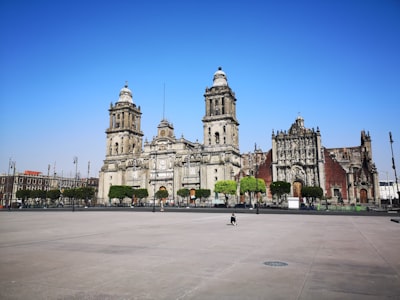
Mexico City is a vibrant and culturally rich destination that offers a wealth of attractions for visitors. From iconic landmarks to fascinating museums, the city has something to captivate every traveler. One of the must-see attractions in Mexico City is the Zócalo, the city's historic central square. This vast plaza is home to the Metropolitan Cathedral, a stunning example of Spanish colonial architecture, as well as the National Palace, which houses stunning murals by the renowned artist Diego Rivera. Another iconic landmark is the Palacio de Bellas Artes, a magnificent art nouveau building that hosts a variety of cultural events, including concerts, ballets, and art exhibitions. Inside, visitors can admire the stunning murals and stained-glass windows that adorn the interior. For a glimpse into Mexico's rich pre-Hispanic history, a visit to the Museo Nacional de Antropología is a must. This world-class museum houses an impressive collection of artifacts and exhibits that showcase the diverse cultures and civilizations that have inhabited the region, including the Aztec, Maya, and Toltec peoples. Another must-see attraction is the Templo Mayor, the remains of the main temple of the Aztec capital of Tenochtitlan. Excavated in the 1970s, the site offers a fascinating glimpse into the city's ancient past and the impressive engineering feats of the Aztec civilization. For a more contemporary cultural experience, the Frida Kahlo Museum, also known as the "Blue House," is a must-visit. This vibrant, blue-hued building was the birthplace and lifelong home of the iconic Mexican artist, and it now houses a collection of her paintings, personal belongings, and insights into her life and work. Nature lovers will be captivated by the Bosque de Chapultepec, a vast urban park that offers a peaceful respite from the bustling city. Within the park, visitors can explore the Castillo de Chapultepec, a former imperial residence that now houses the National History Museum, as well as the Museo Nacional de Arte, which showcases a stunning collection of Mexican art. For a unique cultural experience, a visit to the Xochimilco canals is a must. These colorful, floating gardens were once an integral part of the Aztec agricultural system, and today, visitors can take a leisurely boat ride through the canals, admiring the vibrant flowers and traditional mariachi music. Finally, no trip to Mexico City would be complete without a visit to the Basílica de Nuestra Señora de Guadalupe, one of the most important Catholic pilgrimage sites in the world. This stunning basilica is home to the revered image of the Virgin of Guadalupe, a beloved Mexican icon. These are just a few of the many must-see attractions that Mexico City has to offer. With its rich history, vibrant culture, and stunning architecture, the city is a true gem that is sure to captivate and inspire every traveler.

The Zócalo and Cathedral of Oaxaca: The historic city center, known as the Zócalo, is a lively plaza surrounded by colonial architecture, including the impressive 16th-century Catedral de Oaxaca. Monte Albán: This ancient Zapotec archaeological site features impressive pyramids, temples, and plazas with stunning views of the Oaxaca Valley. Hierve el Agua: These unique natural rock formations resemble petrified waterfalls and offer natural mineral pools for swimming. Mercado de Abastos: Explore this vibrant local market, where you can find an array of traditional Oaxacan crafts, textiles, and delicious regional cuisine. Mezcal Distilleries: Visit one of the many small-batch mezcal producers in the region to learn about the production process and sample this distinctive Mexican spirit. Mitla: Discover the well-preserved ruins of this ancient Zapotec city, known for its intricate stone carvings and geometric patterns. Tule Tree: Marvel at the massive Montezuma cypress tree, one of the largest and oldest trees in the world, located in the town of Santa María del Tule. Oaxacan Cooking Classes: Immerse yourself in the rich culinary traditions of Oaxaca by taking a hands-on cooking class and learning to prepare classic regional dishes.

Petronas Twin Towers The Petronas Twin Towers are the iconic landmarks of Kuala Lumpur. Standing at 451.9 meters (1,483 feet), the twin skyscrapers were the tallest buildings in the world from 1998 to 2004. Visitors can access the Skybridge on the 41st floor and the Observation Deck on the 86th floor for stunning views of the city. The towers also house a shopping mall, a concert hall, and various dining and entertainment options. Batu Caves The Batu Caves are a limestone hill with a series of caves and cave temples. The main attraction is the 272 steps leading up to the entrance of the largest cave, which is filled with Hindu shrines and statues. The site is particularly vibrant during the annual Thaipusam festival, when thousands of devotees gather to celebrate. Merdeka Square Merdeka Square, also known as Independence Square, is a historic site where Malaysia's independence from the British was declared in 1957. The square is surrounded by colonial-era buildings, including the Sultan Abdul Samad Building, the Kuala Lumpur City Gallery, and the Royal Selangor Club. Visitors can stroll through the lush gardens, admire the iconic flagpole, and explore the nearby Central Market. Central Market The Central Market, or Pasar Seni, is a vibrant hub for local arts, crafts, and street food. The market building itself is a heritage site, featuring a mix of Moorish and Victorian architectural styles. Visitors can browse through stalls selling batik, woodcarvings, jewelry, and other Malaysian handicrafts, as well as sample a variety of local delicacies. Thean Hou Temple The Thean Hou Temple is one of the largest Chinese temples in Southeast Asia, dedicated to the Goddess of the Sea, Tian Hou. The temple's intricate architecture, featuring red pillars, golden roofs, and intricate carvings, is a stunning example of traditional Chinese design. Visitors can explore the various shrines, admire the panoramic views of the city, and participate in cultural activities and festivals. Perdana Botanical Garden The Perdana Botanical Garden, also known as the Lake Gardens, is a sprawling urban oasis in the heart of Kuala Lumpur. The garden features a variety of themed areas, including the Orchid Garden, the Hibiscus Garden, and the Deer Park. Visitors can enjoy a leisurely stroll, relax by the lake, or explore the butterfly and bird-watching areas. Islamic Arts Museum Malaysia The Islamic Arts Museum Malaysia is one of the world's largest museums dedicated to Islamic art and culture. The museum's collection includes a wide range of artifacts, from intricate calligraphy and textiles to ceramics and metalwork. Visitors can also explore the museum's impressive architecture, which blends traditional Islamic design elements with modern influences. Menara Kuala Lumpur (KL Tower) The Menara Kuala Lumpur, or KL Tower, is the seventh-tallest freestanding tower in the world, standing at 421 meters (1,381 feet). Visitors can access the observation deck and revolving restaurant at the top, offering panoramic views of the city. The tower also features a variety of other attractions, including a skywalk, a mini zoo, and a variety of dining and entertainment options. Chinatown Kuala Lumpur's Chinatown is a vibrant and bustling neighborhood, known for its traditional shophouses, street food stalls, and lively markets. Visitors can explore the narrow alleyways, browse through the stalls selling Chinese herbs, handicrafts, and souvenirs, and sample a variety of delicious local cuisine, from dim sum to roasted duck. Little India The Little India neighborhood in Kuala Lumpur is a hub of Indian culture and heritage. Visitors can wander through the colorful streets, browse through the shops selling saris, spices, and traditional Indian goods, and indulge in the aromatic flavors of South Indian cuisine. The area is also home to several Hindu temples, including the Sri Mahamariamman Temple, one of the oldest and most ornate in the country. These are the must-see attractions for a trip to Kuala Lumpur, Malaysia. From the iconic Petronas Twin Towers to the vibrant cultural neighborhoods, Kuala Lumpur offers a diverse and fascinating travel experience.

Penang Hill Penang Hill is a popular tourist destination offering stunning views of George Town and the surrounding areas. Visitors can reach the top of the hill via a funicular railway or hiking trails. At the summit, there are various attractions such as the Kek Lok Si Temple, the Habitat Penang Hill, and the Penang Hill Mosque. Kek Lok Si Temple The Kek Lok Si Temple is one of the largest Buddhist temples in Southeast Asia. It features a variety of architectural styles, including Chinese, Thai, and Burmese influences. The temple's main attraction is the 30.2-meter-tall bronze statue of Kuan Yin, the Goddess of Mercy. Clan Jetties The Clan Jetties are a unique community of wooden stilt houses built over the sea. Each jetty is named after a different clan, and visitors can explore the different neighborhoods and learn about the local culture and way of life. Cheong Fatt Tze Mansion The Cheong Fatt Tze Mansion, also known as the "Blue Mansion," is a beautifully preserved example of Straits Chinese architecture. The mansion was built in the late 19th century and is now a UNESCO World Heritage Site. Kapitan Keling Mosque The Kapitan Keling Mosque is one of the oldest mosques in Penang, dating back to the early 19th century. The mosque features a mix of Moorish and Mughal architectural styles and is a significant landmark in the city. Pinang Peranakan Mansion The Pinang Peranakan Mansion is a beautifully restored mansion that showcases the unique Peranakan culture, which is a blend of Malay and Chinese traditions. Visitors can explore the intricate woodcarvings, ceramic tiles, and other artifacts on display. Penang Street Art Penang is renowned for its vibrant street art scene, with murals and installations scattered throughout the city. Some of the most famous works can be found in the historic George Town district. Batu Ferringhi Beach Batu Ferringhi is Penang's most famous beach, known for its long stretch of golden sand and lively night market. Visitors can enjoy water sports, beach activities, and a variety of local cuisine. Penang Hill Funicular Railway The Penang Hill Funicular Railway is a historic mode of transportation that has been operating since 1923. The railway takes visitors on a scenic journey up Penang Hill, offering breathtaking views of the island. Kek Lok Si Temple Light Display During the Chinese New Year and other festivals, the Kek Lok Si Temple is illuminated with a stunning light display, creating a magical and awe-inspiring atmosphere. Penang Bridge The Penang Bridge is a 13.5-kilometer-long bridge that connects Penang Island to the mainland. It offers stunning views of the Penang coastline and is a popular spot for photography. Penang Cuisine Penang is renowned for its diverse and delicious cuisine, with a wide range of local dishes such as nasi kandar, char kway teow, and assam laksa. Visitors can explore the city's vibrant hawker centers and street food stalls to sample the best of Penang's culinary offerings.